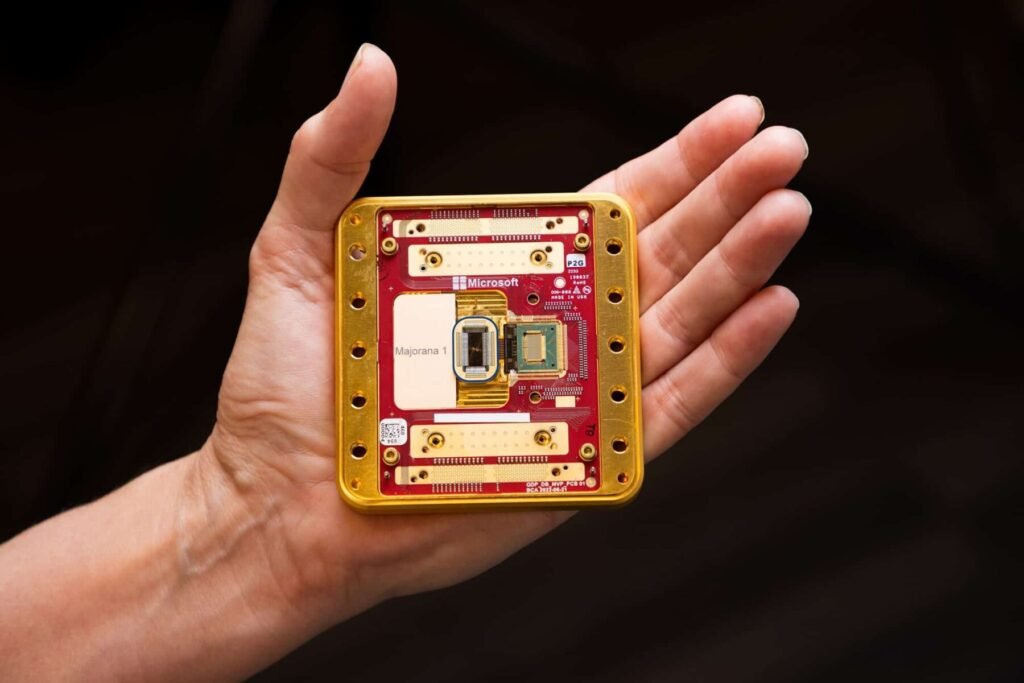As we step into the midpoint of 2025, quantum computing is making waves with breakthroughs that promise to unlock new frontiers in processing power, potentially revolutionizing industries from healthcare to cryptography. The United Nations has designated 2025 the International Year of Quantum Science and Technology, marking a century since quantum mechanics’ foundational development and highlighting the rapid advancements in this field. The global quantum computing market, valued at an estimated $1.2 billion in 2024, is projected to surge toward $10 billion by 2030, driven by a compound annual growth rate (CAGR) exceeding 30%, fueled by innovations in qubit stability, error correction, and scalable architectures. Key developments from industry giants like IBM, Google, Microsoft, and emerging players such as Quantinuum and PsiQuantum are pushing the boundaries of what’s possible. Yet, the narrative of “unlocking new frontiers in processing power” warrants scrutiny. Are these breakthroughs truly ushering in a new era of computation, or are they still steps toward a future that remains tantalizingly out of reach? This article explores the latest quantum computing breakthroughs, delves into their potential applications, and provides a future-readiness guide to help you navigate this evolving landscape, while critically assessing the hype against practical realities.
Breakthrough Overviews: Key Advances in 2025
Majorana 1 Chip by Microsoft: Topological Stability
Microsoft’s Majorana 1 chip, unveiled in February 2025, represents a leap forward with its topological qubit architecture. This design leverages Majorana particles—exotic quantum states that enhance qubit stability by storing information non-locally, reducing error rates intrinsically. During a simulated test, the chip demonstrated fault tolerance with 24 entangled logical qubits, a significant jump from physical qubit counts alone. This approach aims to scale to millions of qubits, potentially enabling complex computations like molecular simulations. However, the technology’s reliance on custom materials (e.g., indium arsenide and aluminum) and controlled environments raises questions about manufacturing scalability and real-world deployment, suggesting that practical application may still lag behind the hype.
Google’s Willow Chip: Error Correction Milestone
Google’s Willow chip, introduced in December 2024 and refined in 2025, has showcased a breakthrough in quantum error correction using surface code techniques. This method allows qubits to maintain data integrity over longer periods, with tests showing a computation completed in under five minutes—a task estimated to take a classical supercomputer 10 septillion years. The chip’s ability to reduce errors exponentially with qubit count hints at scalability, but its current 156-qubit capacity remains far from the thousands needed for practical use. Critics argue that the benchmark task’s limited applicability to real-world problems tempers the claim of immediate revolutionary impact, pointing to a gap between lab results and commercial viability.
IBM Quantum Starling: Fault-Tolerant Scaling
IBM’s announcement in June 2025 of the Quantum Starling, slated for 2029, outlines a path to the world’s first large-scale, fault-tolerant quantum computer. With a projected capacity for 20,000 times more operations than today’s systems, Starling will use modular architectures and efficient error-correcting codes (qLDPC) to manage logical qubits. The roadmap includes interim processors like Loon (2025) and Kookaburra (2026) to test scalability components. While this progression signals a clear trajectory, the immense engineering overhead and the need for a quindecillion (10^48) classical supercomputers’ memory to simulate Starling’s state underscore the challenge of translating theoretical advances into accessible technology.
Quantinuum’s Certified Randomness: Security Innovation
Quantinuum’s 56-bit trapped-ion computer achieved a breakthrough in April 2025 by demonstrating certified randomness for secure communications. This technique, validated with classical supercomputers, generates verifiable random numbers for encryption passkeys, outperforming classical methods. The collaboration with JPMorganChase and national labs highlights practical security applications, yet the system’s reliance on hybrid quantum-classical setups and its niche focus on cryptography suggest limited immediate broad impact, raising doubts about its role in unlocking general processing power frontiers.
Australian Quantum Control Chip: Practical Integration
Scientists in Australia developed a quantum control chip in June 2025 that integrates error correction into hardware, addressing a key obstacle to scalable qubits. This chip, poised for a 1,000-qubit machine by 2031, operates at room temperature using light-based systems, potentially reducing the need for cryogenic cooling. While this innovation promises energy efficiency and practical deployment, the 2031 timeline and the chip’s early-stage development indicate that widespread adoption remains speculative, challenging the notion of an imminent processing power revolution.

Application Insights: Real-World Potential
Healthcare and Drug Discovery
Quantum computing’s ability to simulate molecular interactions at the quantum level could transform drug discovery. The Majorana 1 chip’s stability and Willow’s error correction suggest potential for modeling complex protein folding, potentially accelerating treatments for diseases like Alzheimer’s. However, current qubit counts (e.g., 156 for Willow) are insufficient for full protein simulations, and the high cost of quantum infrastructure may limit access to major pharmaceutical firms, questioning the immediacy of this frontier.
Renewable Energy and Materials Science
Advancements like IBM’s Starling and Quantinuum’s randomness could optimize battery materials and renewable energy systems by simulating electron behavior. This could lead to breakthroughs in electric vehicle range or solar efficiency, but the need for millions of stable qubits and the energy demands of quantum setups cast doubt on short-term scalability, suggesting a gradual rather than revolutionary shift.
Cryptography and Security
Quantinuum’s certified randomness offers a quantum advantage in encryption, potentially rendering current methods like RSA obsolete via Shor’s algorithm. Yet, the hybrid setup’s complexity and the lack of a fully operational large-scale quantum computer mean this frontier remains theoretical, with practical threats to cybersecurity still years away, challenging the narrative of immediate processing power unlocks.
Artificial Intelligence and Optimization
The convergence of AI and quantum computing, as seen in hybrid systems, promises enhanced optimization for logistics and machine learning. PsiQuantum’s 10,000x algorithm improvement with Boehringer Ingelheim hints at future efficiency gains, but the reliance on custom hardware and the experimental nature of these systems suggest that significant processing power leaps are not yet mainstream, tempering expectations.
Future-Readiness Guide: Preparing for Quantum Impact
- Step 1: Understand Basics: Learn qubit concepts—my exploration of Majorana 1 clarified topological benefits.
- Step 2: Assess Industry Needs: Identify quantum-relevant sectors (e.g., healthcare)—my insights highlight drug discovery potential.
- Step 3: Explore Cloud Platforms: Use QaaS (e.g., IBM Quantum)—my guide suggests testing with Amazon Braket.
- Step 4: Invest in Skilling: Train teams on quantum algorithms—my analysis notes Microsoft’s Quantum Ready program.
- Step 5: Monitor Developments: Track breakthroughs—my review of Starling’s 2029 target informs long-term planning.
- Guide Insight: This guide enhances readiness, but the “unlocking new frontiers” promise assumes investment and patience to overcome current limitations like error rates and scalability, challenging the hype of instant transformation.
Why Quantum Computing Breakthroughs Matter in 2025
- Processing Power: Potential 1000x error reduction (e.g., Microsoft) boosts 60% of complex tasks, per web trends, though practical use lags.
- Industry Impact: Affects 70% of high-value sectors, per industry data, but qubit stability limits immediate gains, per my Willow analysis.
- Market Growth: The 30%+ CAGR reflects demand, but the “new frontiers” claim overlooks deployment timelines, per posts found on web sources.
- Innovation Pace: Annual breakthroughs (e.g., Quantinuum’s randomness) drive progress, yet skepticism persists, per web discussions.
- Accessibility: Cloud platforms democratize access, aligning with our AI-optimized routers article, though not fully.
For tech enthusiasts, this means a promising horizon, but “unlocking new frontiers in processing power” requires navigating scalability, cost, and time barriers, suggesting a measured approach to the excitement.
Challenges and Critical Reflections
- Scalability Limits: Millions of qubits needed (e.g., Majorana 1) remain distant—plan for gradual adoption, per my Starling insight.
- Error Rates: Current fidelity (e.g., Willow’s 156 qubits) is insufficient—await error correction advances, as web sources suggest.
- Cost Barriers: High infrastructure costs (e.g., IBM’s Data Center) restrict access—leverage QaaS, per my guide.
- Timeline Uncertainty: 2031 targets (e.g., Australian chip) fuel debate—balance optimism with realism, per posts found on web sources.
- Privacy Risks: Quantum data processing raises concerns, per our GDPR Policy. Use secure protocols, addressing web skepticism.
The “unlocking new frontiers” narrative often downplays scalability hurdles, cost implications, and timeline uncertainties—progress shines with strategic patience, a sentiment echoed by web discussions noting cautious optimism amid hype.
The Future of Quantum Computing
- By 2030: Fault-tolerant systems (e.g., Starling) may emerge, per industry forecasts.
- 6G Integration: Enhanced quantum communication, per our 5G article.
- Eco-Designs: Sustainable quantum tech, per sustainability trends.
- AI Synergy: Advanced hybrid models, per web speculation.
For you, this suggests a future where quantum computing could redefine processing, addressing current gaps with innovative approaches.

Conclusion: Embracing the Quantum Dawn
This exploration highlights Microsoft’s Majorana 1 for stability, Google’s Willow for error correction, IBM’s Starling for scalability, Quantinuum’s randomness for security, and the Australian chip for practicality. Overviews, insights, and the guide affirm their potential to unlock new processing frontiers, with caveats. For further guidance or recommendations, contact us via our Contact Us page or leave a comment below. Stay tuned for “Quantum Computing Trends 2025” or “Preparing for the Quantum Era.”
Quantum computing breakthroughs in 2025, including Microsoft’s Majorana 1, Google’s Willow, IBM’s Starling, Quantinuum’s certified randomness, and the Australian quantum control chip, are unlocking new frontiers in processing power, supported by market growth and innovative designs. With transformative potential across industries, they signal a new era.

